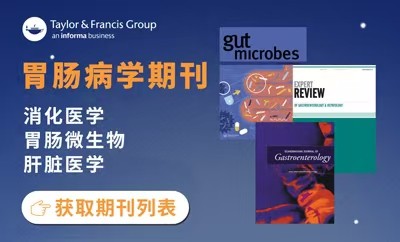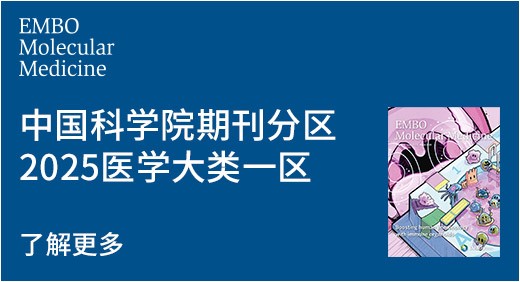-
Fatigue fracture analysis and lifetime prediction of laser-cladded notched titanium alloy based on energy dissipation method Int. J. Damage Mech. (IF 3.9) Pub Date : 2025-07-16 Chengji Mi, Yongqiang Li, Yingang Xiao, Haiqi Li, Liang Xu, Jiachang Tang
The notched titanium alloys after laser cladding are often accompanied by anisotropic microstructural effects and metastable microstructures, and estimation of its remaining lifespan and fracture behavior becomes challenging. In this study, the effective fracture surface area of laser-cladded notched titanium alloy under different stress ratios is defined as an indicator of proposed dissipative energy
-
Aerodynamic optimization of a coaxial rotor system using a deep learning-based multi-fidelity surrogate model Eng. Appl. Comput. Fluid Mech. (IF 5.4) Pub Date : 2025-07-16 Shu-Hui Qin, Ai-Ming Yang
-
Microscale modeling of fatigue crack growth at particle interfaces in viscoelastic asphalt materials Int. J. Damage Mech. (IF 3.9) Pub Date : 2025-07-15 Li’an Shen, Juntao Wang, Chonghui Wang, Xue Luo, Yuqing Zhang
The viscoelastic damage evolution at the microscale particle interfaces of asphalt mortar or mixtures fundamentally determines the material's fatigue crack growth and failure at the macroscale. However, existing microscale damage models are often based on empirical assumptions that depend on interparticle stresses or forces, which are inaccurate or even incorrect for viscoelastic asphalt materials
-
Anomalous size effects with fixed criticality in bistable flexible mechanical metamaterials J. Mech. Phys. Solids (IF 6.0) Pub Date : 2025-07-14 Zehuan Tang, Tingfeng Ma, Boyue Su, Qing Xia, Pengfei Kang, Bowei Wu
When the structure deformation is dominated by the low-energy deformation mode, the structure hardens with the increase in the size (number of units) at small sizes. This anomalous behavior will eventually disappear with the decay length of the finite structure converging to a size-independent characteristic quantity, but the specific critical point at which the anomalous behavior disappears still
-
Dislocations in the elastic fields of randomly distributed defects J. Mech. Phys. Solids (IF 6.0) Pub Date : 2025-07-14 Ronghai Wu, Michael Zaiser
In recent years, the behavior of dislocations in random solid solutions has received renewed interest, and several models have been discussed where random alloys are treated as effective media containing random distributions of dilatation and compression centers. More generally speaking, the arrangement of defects in metals and alloys is always characterized by statistical disorder, and the same is
-
A statistical mechanics derivation and implementation of non-conservative phase field models for front propagation in elastic media J. Mech. Phys. Solids (IF 6.0) Pub Date : 2025-07-14 Travis Leadbetter, Prashant K. Purohit, Celia Reina
Over the past several decades, phase field modeling has been established as a standard simulation technique for mesoscopic science, allowing for seamless boundary tracking of moving interfaces and relatively easy coupling to other physical phenomena. However, despite its widespread success, phase field modeling remains largely driven by phenomenological justifications except in a handful of instances
-
Energy characteristics of rocks prior to macroscopic fracture under cyclic loading Int. J. Damage Mech. (IF 3.9) Pub Date : 2025-07-14 Jun Xu, Lu Ma, Xiaochun Xiao
To clarify the damage evolution of rock-like materials with defects under cyclic loading, gypsum specimens containing prefabricated nonpenetrating crack(s) are employed to undertake a quantitative study of the energy in the failure process of brittle materials under cyclic loading. The results show that under cyclic loading, the laws of energy accumulation, transformation, and release can effectively
-
Editorial: Generative Artificial Intelligence for Predictive Simulations and Decision-Making in Science and Engineering Comput. Methods Appl. Mech. Eng. (IF 7.3) Pub Date : 2025-07-12 Youssef Marzouk, Benjamin Peherstorfer
-
Modeling partially observed nonlinear dynamical systems and efficient data assimilation via discrete-time conditional Gaussian Koopman network Comput. Methods Appl. Mech. Eng. (IF 7.3) Pub Date : 2025-07-12 Chuanqi Chen, Zhongrui Wang, Nan Chen, Jin-Long Wu
A discrete-time conditional Gaussian Koopman network (CGKN) is developed in this work to learn surrogate models that can perform efficient state forecast and data assimilation (DA) for high-dimensional complex dynamical systems, e.g., systems governed by nonlinear partial differential equations (PDEs). Focusing on nonlinear partially observed systems that are common in many engineering and earth science
-
The latent variable proximal point algorithm for variational problems with inequality constraints Comput. Methods Appl. Mech. Eng. (IF 7.3) Pub Date : 2025-07-12 Jørgen S. Dokken, Patrick E. Farrell, Brendan Keith, Ioannis P.A. Papadopoulos, Thomas M. Surowiec
The latent variable proximal point (LVPP) algorithm is a framework for solving infinite-dimensional variational problems with pointwise inequality constraints. The algorithm is a saddle point reformulation of the Bregman proximal point algorithm. At the continuous level, the two formulations are equivalent, but the saddle point formulation is more amenable to discretization because it introduces a
-
Morphological Evolution and Instability of Microvoids Governed by Competing Surface and Bulk Diffusion J. Mech. Phys. Solids (IF 6.0) Pub Date : 2025-07-12 Ping Yang, Yilun Xu, Wanghui Li, Yong-Wei Zhang, Pengyang Zhao
Understanding diffusion-controlled void growth at the nanoscale under extreme environments (e.g., high temperatures, irradiation) is crucial for predicting failure in metallic materials. We develop a micromechanical model that integrates surface diffusion, bulk diffusion, and heterogeneous stress fields to capture the growth, morphological evolution and coalescence of microvoids. The model is validated
-
Multimodal super-resolution for fast image-based simulation of crystal plasticity Comput. Methods Appl. Mech. Eng. (IF 7.3) Pub Date : 2025-07-11 Daria Mesbah, Henry Proudhon, Lionel Gélébart, David Ryckelynck
Crystal Plasticity FFT-based simulations, commonly used to predict crystal lattice rotation fields in polycrystalline materials, are computationally intensive. Reducing the input volume resolution can speed up these simulations, but often at the expense of prediction accuracy. To address this issue, we introduce a Multimodal EDSR (MEDSR) architecture, based on Enhanced Deep Residual Networks for Single
-
A novel SPH-based method for fiber orientation and detailed simulation of patient-specific vascular fluid–structure interactions Comput. Methods Appl. Mech. Eng. (IF 7.3) Pub Date : 2025-07-11 Yao Lu, Changchen Liu, Peishuo Wu, Lin Luo, Moubin Liu, Chi Zhu
In patient-specific simulation of vascular fluid–structure interaction, the incorporation of key biomechanical factors, such as fiber structures, physiological initial and boundary conditions, is crucial for enhancing the fidelity and reliability of the results. However, incorporating these factors remains challenging due to the lack of effective modeling methods. This study proposes a novel smoothed
-
A new approach for topology optimization with design-following Neumann boundary conditions Comput. Methods Appl. Mech. Eng. (IF 7.3) Pub Date : 2025-07-11 Christos Kostopoulos, Ameer Marzok, Haim Waisman
This work introduces a novel approach to tackle topology optimization problems where both the external load and stiffness matrix are boundary-dependent. The proposed algorithm is based on the concept of density gradient methods, a class of density-based approaches that do not require additional fields or parametric curves for the boundary recognition, unlike other methods in the literature. The core
-
Micro-plastic deformation behavior and life enhancement mechanism of additively manufactured Ti-6Al-4V titanium alloy during high cycle fatigue Int. J. Fatigue (IF 6.8) Pub Date : 2025-07-11 Haizhou Li, Yaofu Wang, Jihong Zhu, Yan Liu, Qingyuan Wang, Yong Chen, Hui Chen
The high cycle fatigue (HCF) properties of laser directed energy deposition (L-DED) Ti-6Al-4V titanium alloy at different maximum cyclic stresses (σmax) were studied, with a particular focus on revealing the micro-plastic deformation behavior and the enhancement mechanisms of HCF life under a relatively high maximum cyclic stress of σmax=600 MPa. The results indicate that as σmax increases, the cyclic
-
Unified stiffness-strength degradation model for fatigue reliability assessment of polymer matrix composite laminates Int. J. Fatigue (IF 6.8) Pub Date : 2025-07-11 Jiaxing Sun, Wenfeng Pan, Lingyu Sun, Xudong Yang, Rihan Wang
Existing linear fatigue cumulative damage (FCD) models for laminates under variable amplitude cyclic loading (VACL) exhibit poor life prediction accuracy due to neglecting the nonlinear damage-rate evolution and the distinction between stiffness and strength degradation, which impedes the reliability assessment of polymer matrix composite (PMC) laminates. This study proposes a fatigue reliability prediction
-
Corrigendum to “Improving the fatigue limit of FSW6061 Al alloy welded joints by surface spinning rolling” [Int. J. Fatigue 200 (2025) 109119] Int. J. Fatigue (IF 6.8) Pub Date : 2025-07-11 B.S. Gong, Z.J. Zhang, H.W. Wang, R. Liu, H.Z. Liu, G. Purcek, M. Demirtas, H. Yanar, Z.F. Zhang
-
A consistent Lagrangian theory for phase separation in chemoelastic polymeric media at large deformations J. Mech. Phys. Solids (IF 6.0) Pub Date : 2025-07-11 A. Gomero Soria, A. Stracuzzi, A.E. Ehret
Large volume and shape changes may occur in polymer solutions and gels subject to mechanical loads or solvent loss. These deformations can lead to local alterations in composition, affecting or even triggering the phase separation into polymer-rich and solvent-rich phases. Studying microstructure evolution arising under these conditions thus necessitates a large strain formulation of the classical
-
The Dynamics of Sand Dunes Annu. Rev. Fluid Mech. (IF 30.2) Pub Date : 2025-07-10 Nathalie M. Vriend, Karol A. Bacik
Sand dunes cover 5% of Earth's land surface, and they abundantly populate river bottoms and seabeds. The subtle dynamical interplay between the granular matter and the overlaying fluid leads to rich phenomenology at different scales, from colliding grains through migrating sand dunes to slowly evolving dune fields. In this review, we survey recent developments in the literature on the dynamics of sand
-
Interval deep neural networks with damage function for credible structural identification Comput. Methods Appl. Mech. Eng. (IF 7.3) Pub Date : 2025-07-10 Geyong Cao, Xiaojun Wang
Engineering structures in long-term service inevitably experience damage across regions due to complex environments, driving the need for online damage identification. Traditional physics-driven methods face efficiency challenges, while data-driven approaches struggle to balance precision and parameterization. Furthermore, conventional neural networks struggle to effectively represent multi-source
-
Phase-field modeling of hydrogen-promoted fracture: Natural incorporation of hydrostatic stress dependencies via a chemical potential-based variational formulation Comput. Methods Appl. Mech. Eng. (IF 7.3) Pub Date : 2025-07-10 Vikas Diddige, Stephan Roth, Bjoern Kiefer
Metals, notably in hydrogen storage and transport, are susceptible to premature failure due to hydrogen embrittlement. With ongoing research exploring the use of existing natural gas pipelines for hydrogen transport, assessing the suitability and safety of these pipeline steels is essential for a successful green hydrogen economy. According to the current hypothesis, hydrogen enters the metal lattice
-
Intelligent fatigue-resistant design of crack-stop hole under arbitrary loading mode Int. J. Fatigue (IF 6.8) Pub Date : 2025-07-10 Kai Kang, Xirui Yan, Qiancheng Zhang, Chao Yang, Sida Liu, Yan Chen, Yilun Liu
Structure fatigue crack poses significant challenges to structural integrity across critical engineering domains. Despite widespread implementation, conventional circular crack-stop holes exhibit substantial performance limitations in complex loading scenarios. This study introduces an intelligent fatigue-resistant design framework that synergistically integrates high-throughput finite element method
-
An improved Multi-Objective Whale Optimization Algorithm for hydrodynamic and acoustic performance optimization of Myring-shaped underwater vehicle Eng. Appl. Comput. Fluid Mech. (IF 5.4) Pub Date : 2025-07-10 Qigan Wang, Yu Dong, Han Wu, Peizhan Cao, Zhijun Zhang
-
An implicit time integrator for Cosserat rods based on the spherical Bézier interpolation Comput. Methods Appl. Mech. Eng. (IF 7.3) Pub Date : 2025-07-09 Alessandro Cammarata, Leopoldo Greco, Domenico Castello, Massimo Cuomo
The updating procedure of an implicit time scheme integrator is based on linear operations of vectors defined at different instants. When the procedure involves rotational coordinates these quantities belong to different tangent spaces to SO(3). This issue makes the process formally not-consistent with the manifold. At the same time, a correct implementation should transport and project incremental
-
3D material optimization of functionally graded shells using incremental Kriging surrogates and adaptive infill strategies Comput. Methods Appl. Mech. Eng. (IF 7.3) Pub Date : 2025-07-09 Huy Tang, Nam V. Nguyen, Jaehong Lee
This paper attempts to develop a surrogate-assisted evolutionary algorithm (SAEA) framework to efficiently solve the 3D functionally graded material (FGM) optimization problems of shells using incremental Kriging models. The framework consists of two phases. In the first phase, the base EA is run normally for a period and training data is collected. Then in the second phase, the collected data is used
-
Multiscale wave-based identification of layer-specific geometric and viscoelastic parameters in heterogeneous multilayer composites using full-field measurements Comput. Methods Appl. Mech. Eng. (IF 7.3) Pub Date : 2025-07-09 Xuefeng Li, Huina Mao, Mohamed Ichchou, Romain Rumpler
The full model parameters estimation of heterogeneous multilayer composites (HMC), involving geometric parameters and static-dynamic viscoelastic properties, has attracted considerable attention for both damage diagnosis and the design of new materials. However, this remains a challenge in current research due to the complexity involved in identifying special layers. To this end, we developed a robust
-
Least-squares collocation method with boundary constraints Comput. Methods Appl. Mech. Eng. (IF 7.3) Pub Date : 2025-07-09 Jan Jaśkowiec, Artur Krowiak
This article presents the least-squares collocation method (LSCM), which reformulates the conventional boundary value problem (BVP) into a constrained quadratic minimization problem, where the constraints are associated with the Dirichlet and Neumann boundary conditions. The approximation of the solution is performed within a finite-dimensional space using bases formed using various types of functions
-
Multiscale contact homogenisation through the method of multiscale virtual power: Computational implementation and numerical aspects Comput. Methods Appl. Mech. Eng. (IF 7.3) Pub Date : 2025-07-09 António M. Couto Carneiro, Rodrigo Pinto Carvalho, Eduardo A. de Souza Neto, Francisco M. Andrade Pires
In this work, the Surface-Surface (SS) and Surface-Volume (SV) multiscale contact models proposed by Couto Carneiro et al. (2024), derived from the Method of Multiscale Virtual Power, are extended beyond their original mathematical formulation. A finite element-based scheme is developed to enable the contact homogenisation of heterogeneous contact interfaces, leveraging these multiscale contact models
-
-
Surface-polyconvex models for soft elastic solids J. Mech. Phys. Solids (IF 6.0) Pub Date : 2025-07-09 Martin Horák, Michal Šmejkal, Martin Kružík
Soft solids with surface energy exhibit complex mechanical behavior, necessitating advanced constitutive models to capture the interplay between bulk and surface mechanics. This interplay has profound implications for material design and emerging technologies. In this work, we set up variational models for bulk-surface elasticity and explore a novel class of surface-polyconvex constitutive models that
-
An anisotropic damage model with defect-crack interactions for heterogeneous brittle media under high-rate loading J. Mech. Phys. Solids (IF 6.0) Pub Date : 2025-07-09 S. Braroo, K.T. Ramesh
A defect-crack interaction informed anisotropic damage modeling framework is proposed to predict the uniaxial compressive strength of heterogeneous brittle materials under high-strain-rate loading (strain rates of 102s−1 – 103s−1). The model is capable of accounting for the effect of interaction stress fields, produced by pre-existing defects, on cracks in a brittle material, allowing for the incorporation
-
Frequent estuarine engineering exacerbates flood risk in the Greater Bay Area Eng. Appl. Comput. Fluid Mech. (IF 5.4) Pub Date : 2025-07-09 Ping Zhang, Haichen Liu, Huayang Cai, Suying Ou, Zhijun Dai, Jianliang Lin, Qingshu Yang
-
A movable partition region strategy for multiscale concurrent topology optimization with multiple connectable microstructures Comput. Methods Appl. Mech. Eng. (IF 7.3) Pub Date : 2025-07-08 Zhaoyou Sun, Qingfang Duan, Yangjun Luo
Multiscale structures can be widely observed in nature and exhibit exceptional performance. To design such structures with affordable computational effort, the multiscale concurrent topology optimization (MCTO) paradigm decouples the design process into interconnected macroscopic and microscopic parts through the homogenization method. Within this paradigm, two interpolation methods can be used to
-
Fretting and fatigue assessment of scalmalloy and AL7075-T651 shrink-fitted shafts Int. J. Fatigue (IF 6.8) Pub Date : 2025-07-08 D. Erena, M. Moreno-Rubio, Andrea Zanichelli, Jesús Vázquez, Carlos Navarro
This work aims to study the effect of additive manufacturing under fretting fatigue conditions, an area in which there is still very little information. For this purpose, two test campaigns were carried out on a shaft-hub assembly subjected to bending using two different materials: the AL7075-T651 aluminium alloy and an aluminium alloy specifically designed for additive manufacturing, Scalmalloy®.
-
-
Level-set topology optimisation with unfitted finite elements and automatic shape differentiation Comput. Methods Appl. Mech. Eng. (IF 7.3) Pub Date : 2025-07-07 Zachary J. Wegert, Jordi Manyer, Connor N. Mallon, Santiago Badia, Vivien J. Challis
In this paper we develop automatic shape differentiation techniques for unfitted discretisations and link these to recent advances in shape calculus for unfitted methods. We extend existing analytic shape calculus results to the case where the domain boundary intersects with the boundary of the background domain. We further show that we can recover these analytic derivatives to machine precision regardless
-
A reaction-diffusion based level set method for thermo-elastoplastic three-dimensional topology optimisation Comput. Methods Appl. Mech. Eng. (IF 7.3) Pub Date : 2025-07-07 Seyed Sajad Mirjavadi, Grant P. Steven
This paper presents a reaction-diffusion-based level set topology optimisation method to improve the crashworthiness of three-dimensional structures under thermal loading. The objective is to maximise energy absorption under prescribed displacements. A 30 % volume constraint is applied to all designs, with some evaluated at 50 %. Maximum displacement constraints lead to elastoplastic deformation in
-
An attention-based neural ordinary differential equation framework for modeling inelastic processes Comput. Methods Appl. Mech. Eng. (IF 7.3) Pub Date : 2025-07-07 Reese E. Jones, Jan N. Fuhg
To preserve strictly conservative behavior as well as model the variety of dissipative behavior displayed by solid materials, we propose a significant enhancement to the internal state variable-neural ordinary differential equation (ISV-NODE) framework. In this data-driven, physics-constrained modeling framework internal states are inferred rather than prescribed. The ISV-NODE consists of: (a) a stress
-
A unified unresolved/semi-resolved ALE-VMS-DEM framework for flow–particle interaction with applications to powder dynamics modeling in additive manufacturing Comput. Methods Appl. Mech. Eng. (IF 7.3) Pub Date : 2025-07-07 Haojia Cheng, Shashwot Paudel, Todd Sparks, Jim Lua, Jinhui Yan
Flow–particle interaction is commonly modeled by coupling computational fluid dynamics (CFD) and discrete element methods (DEM). However, the two prevalent methods for CFD-DEM coupling – unresolved and semi-resolved schemes – put specific requirements on the ratio of mesh size to particle diameter, hindering their applications to large-scale industrial processes with complex geometries. This paper
-
A spline-based hexahedral mesh generator for patient-specific coronary arteries Comput. Methods Appl. Mech. Eng. (IF 7.3) Pub Date : 2025-07-07 Fabio Marcinnò, Jochen Hinz, Annalisa Buffa, Simone Deparis
This paper presents a spline-based hexahedral mesh generator for tubular geometries commonly encountered in hæmodynamics studies, in particular coronary arteries. We focus on techniques for accurately meshing vessels with stenoses and aneurysms, as well as non-planar bifurcations. Our approach incorporates several innovations, including a spline-based description of the vessel geometry in both the
-
Locking mitigation in geometrically nonlinear solid beams through isogeometric analysis and a generalized constitutive approach Comput. Methods Appl. Mech. Eng. (IF 7.3) Pub Date : 2025-07-07 Leonardo Leonetti, Alessia Patton, Josef Kiendl
This work proposes a novel geometrically nonlinear isogeometric solid-beam element, based on a one-dimensional interpolation of the displacement field. More specifically, the latter is approximated by a 12-parameter polynomial expansion in terms of displacement control variables and the cross-section parametric directions up to a bilinear term. To keep a beam-like modeling approach, the displacements
-
Fatigue crack propagation in 15-5PH/316L bi-material steels fabricated by laser powder bed fusion Int. J. Fatigue (IF 6.8) Pub Date : 2025-07-07 Anqi Liang, Songsong Lu, Mitchell Leering, Bilal Ahmed, Michael Fitzpatrick, Philippa A.S. Reed, Tomas Polcar, Andrew R. Hamilton
Multi-material laser powder bed fusion (MM-LPBF) offers the possibility of components with material and compositional complexity, as well as the geometric complexity for which additive manufacturing is known. LPBF materials are susceptible to fatigue failures due to stress concentrating roughness and porosity defects. Understanding fatigue failure processes is therefore important to enable adoption
-
An adaptive phase field model for high cycle fatigue analysis across specimen geometries Int. J. Fatigue (IF 6.8) Pub Date : 2025-07-07 Guangxu Chen, Can Erdogan, Tuncay Yalçinkaya, Xianqiao Wang, Keke Tang
High cycle fatigue behavior of components with notches and cracks, which are common in engineering applications, is significantly influenced by geometrical size effect and complicates accurate fatigue life prediction. Traditional methods for addressing this issue often limited to specific types of components and rely heavily on empirical correlations. To overcome these limitations, an adaptive phase-field
-
A novel multistage time sweep testing approach for fatigue evaluation of asphalt binders Int. J. Fatigue (IF 6.8) Pub Date : 2025-07-06 Faqi Gong, Yonglin Hu, Hui Li, Yuqing Zhang
Accurate evaluation of asphalt binder’s fatigue performance is crucial for material selection in asphalt pavements. Current fatigue evaluation methods include the Time Sweep (TS) testing approach, known for its high accuracy but time-consuming, and the Linear Amplitude Sweep (LAS) testing approach, which is efficient but sometimes yields results that deviate from those of the TS testing approach. To
-
Fatigue lifetime assessment of tube-to-flange arc-welded steel joints with reinforcement ribs under constant and variable amplitude multiaxial fatigue loadings according to the peak stress method Int. J. Fatigue (IF 6.8) Pub Date : 2025-07-05 Alberto Visentin, Alberto Campagnolo, Vittorio Babini, Giovanni Meneghetti
Welded reinforcements are a widespread solution when increasing the stiffness and load bearing capacity of engineering structures is of primary interest, particularly under in-service cyclic loadings which require a fatigue durability assessment. However, experimental fatigue data available in the literature and the number of classified details reported in Standards and Recommendations are limited
-
A unified probabilistic fatigue life prediction method for corroded welded joints of uncoated weathering steel considering the effect of multiple cracks Int. J. Fatigue (IF 6.8) Pub Date : 2025-07-05 Yan Ma, Qing hua Zhang, Chuang Cui, Yong Xia, Kun Tang
Understanding the fatigue behavior of corroded welded joints is crucial for ensuring the long-term structural integrity of uncoated weathering steel infrastructure in harsh environments. Traditional deterministic fatigue life prediction methods fail to capture the multiple uncertainties of corroded welded joints arising from the stochastic nature of corrosion morphology, including pit characteristics
-
Influence of vanadium carbides and stacking fault energy on the low-cycle fatigue behavior of a face-centered cubic multi-principal element alloy Int. J. Fatigue (IF 6.8) Pub Date : 2025-07-05 Felix Oppermann, Christian Hinte, Steffen Wackenrohr, Ulrich Krupp, Hans Jürgen Maier, Christian Haase
Multi-principal element alloys (MPEA) have gathered significant attention in the scientific community due to their versatility and design concepts. The Fe30Mn10Co10Cr (at.-%) MPEA system revealed outstanding mechanical properties, owing to the activation of multiple strengthening mechanisms. In this MPEA system, the formation of vanadium carbides was found to be efficient to enhance the strength and
-
Effect of Laser Shock Peening on fatigue properties of additively manufactured AlSi10Mg Int. J. Fatigue (IF 6.8) Pub Date : 2025-07-05 Martin Matušů, Ondřej Stránský, Michal Slaný, Jan Šimota, Ludmila Džuberová, Jakub Rosenthal, Jan Papuga
This study investigates the fatigue strength characteristics of AlSi10Mg specimens produced by Laser Powder Bed Fusion (L-PBF) and heat-treated at 200 °C for 2 h. A particular focus of this paper is on evaluating the potential of Laser Shock Peening (LSP) to enhance their fatigue performance. The hourglass specimens were printed in a single batch, resulting in six distinct groups for testing. While
-
Prevailing effect of residual stresses and defects on the fatigue strength of net-shape parts produced with Laser Powder Bed Fusion (L-PBF) 316L stainless steel Int. J. Fatigue (IF 6.8) Pub Date : 2025-07-05 Marion Auffray, Franck Morel, Linamaria Gallegos Mayorga, Etienne Pessard, Thierry Baffie, Pierre Merot, Paul Buttin
Laser Powder Bed Fusion (L-PBF) additive manufacturing enables the production of complex-shaped parts with high mechanical resistance. Such components exhibit a multi-scale microstructure, internal, sub-surface, and surface defects, a rough surface finish and a residual stress gradient in the as-built net-shape condition. All of these factors can alter the fatigue behaviour. This study aims to improve
-
Elastic Plateau–Rayleigh instability in soft cylinders: Surface elasticity and periodic beading J. Mech. Phys. Solids (IF 6.0) Pub Date : 2025-07-05 F. Magni, D. Riccobelli
The Plateau–Rayleigh instability shows that a cylindrical fluid flow can be destabilized by surface tension. Similarly, capillary forces can make an elastic cylinder unstable when the elastocapillary length is comparable to the cylinder’s radius. While existing models predict a single isolated bulge as the result of an instability, experiments reveal a periodic sequence of bulges spaced out by thinned
-
Likelihood level adapted estimation of marginal likelihood for Bayesian model selection Comput. Methods Appl. Mech. Eng. (IF 7.3) Pub Date : 2025-07-04 Subhayan De, Reza Farzad, Patrick T. Brewick, Erik A. Johnson, Steven F. Wojtkiewicz
In computational mechanics, multiple models are often present to describe a physical system. While Bayesian model selection is a helpful tool to compare these models using measurement data, it requires the computationally expensive estimation of a multidimensional integral — known as the marginal likelihood or as the model evidence (i.e., the probability of observing the measured data given the model)
-
Hybridized augmented Lagrangian methods for contact problems Comput. Methods Appl. Mech. Eng. (IF 7.3) Pub Date : 2025-07-04 Erik Burman, Peter Hansbo, Mats G. Larson
This paper addresses the problem of friction-free contact between two elastic bodies. We develop an augmented Lagrangian method that provides computational convenience by reformulating the contact problem as a nonlinear variational equality. To achieve this, we propose a Nitsche-based method incorporating a hybrid displacement variable defined on an interstitial layer. This approach enables complete
-
Evaluating methods to reduce duration of near-threshold fatigue crack growth rate measurements for low-alloy steels in hydrogen gas Int. J. Fatigue (IF 6.8) Pub Date : 2025-07-04 Kevin A. Nibur, Brian P. Somerday
Measurement of the near-threshold fatigue crack growth rate (da/dN) vs. stress-intensity factor range (ΔK) relationship in hydrogen gas is essential for maximizing the calculated design fatigue life of high-pressure hydrogen storage vessels. However, such measurements are rarely performed, since the low cyclic loading frequencies applied in standard practice lead to prohibitively protracted test durations
-
Defect sensitivity of high-strength steel 42CrMo4: The role of crack initiation and non-propagation defining the fatigue limit Int. J. Fatigue (IF 6.8) Pub Date : 2025-07-04 Suraj S. More, Joona Vaara, Kimmo Kärkkäinen, Miikka Väntänen, Tero Frondelius, Herwig Mayer, Bernd M. Schönbauer
In the defect-based fatigue framework, there are still open questions regarding the role of crack initiation. The fatigue limit of small defects is commonly explained through crack non-propagation, although direct evidence is not always given to support this. In the present study, the defect sensitivity of quenched and tempered 42CrMo4 steel was systematically investigated using specimens containing
-
Structure of anisotropic bi-dimensional elasticity tensors in micromorphic and related higher-order media J. Mech. Phys. Solids (IF 6.0) Pub Date : 2025-07-04 Michaël Peigney
This paper addresses the classification of constitutive tensors in bi-dimensional micromorphic elasticity, a higher-order continuum theory that extends Cauchy elasticity by introducing an additional degree of freedom in the form of a microdeformation tensor. We systematically investigate the impact of material symmetries on the forms of the constitutive elasticity tensors, reducing the number of independent
-
Material-embedding Physics-Augmented Neural Networks: A first application to constitutive law parameterization Comput. Methods Appl. Mech. Eng. (IF 7.3) Pub Date : 2025-07-03 C. Jailin, E. Baranger
A novel Material-Embedding Physics-Augmented Neural Network (ME-PANN) framework is presented for constitutive modeling in isotropic elasticity. A self-supervised trainable embedding vector is introduced to capture material-specific information. The embedding vector is concatenated with the inputs of each fully connected layer, allowing the network to adapt its response based on the material behavior
-
3D neuron growth and neurodevelopmental disorder modeling based on truncated hierarchical B-splines with multi-level local refinements Comput. Methods Appl. Mech. Eng. (IF 7.3) Pub Date : 2025-07-03 Kuanren Qian, Yongjie Jessica Zhang
3D neuron growth and neurodevelopmental disorders (NDDs) deterioration exhibit complex morphological transformations as neurites differentiate into axons and dendrites, forming intricate networks driven by tubulin concentrations and neurotrophin signals. Conventional 2D models fall short of capturing such morphological complexity, prompting the need and development of advanced 3D computational approaches
-
Accelerating CMA-ES-based topology optimization through B-spline parameterized level-set method Comput. Methods Appl. Mech. Eng. (IF 7.3) Pub Date : 2025-07-03 Kengo Mizukami, Garuda Fujii
Topology optimization often faces challenges such as ill-posedness, grayscale, and checkerboard patterns in structural modeling, as well as multimodality and the curse of dimensionality in optimal solution searches. This study proposes a method that simultaneously addresses these challenges to achieve a high-performing optimal configuration without the need for burdensome tasks, such as initial guessing
-
An enriched immersed boundary method for Stefan problem with application to thermal modeling of additive manufacturing process Comput. Methods Appl. Mech. Eng. (IF 7.3) Pub Date : 2025-07-03 Jongmin Rim, Jinhui Yan
The Stefan problem describes thermal processes between two material phases undergoing phase transitions. It arises in numerous natural and engineering processes, such as ice melting, welding, and metal additive manufacturing. Simulating the Stefan problem remains challenging. Accurately resolving the material interface evolution and imposing the boundary conditions are troublesome for existing interface-tracking
-
Crystal plasticity modeling of uniaxial tensile and fatigue failure behaviors of laser shock peened aluminum alloy Int. J. Fatigue (IF 6.8) Pub Date : 2025-07-03 Shijie Song, Zhenghao Wu, Jianfeng Zhao, Liucheng Zhou, Shuangquan Guo, Qianhua Kan, Xianmin Chen, Xu Zhang
Laser Shock Peening (LSP) has emerged as an advanced surface treatment technique for improving the mechanical properties and fatigue resistance of metallic materials, particularly in 7075 aluminum alloy. This study investigates the effects of LSP on the mechanical behaviors of 7075-T7351 aluminum alloy through microstructural characterization, uniaxial tensile tests, fatigue tests, and Crystal Plasticity





























































 京公网安备 11010802027423号
京公网安备 11010802027423号